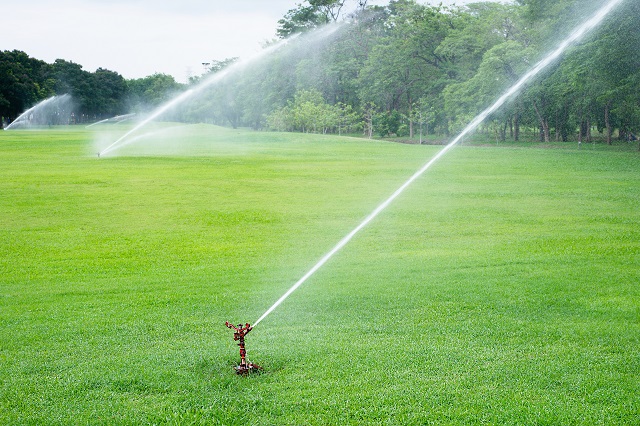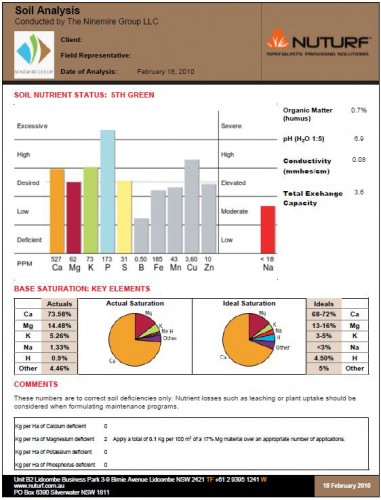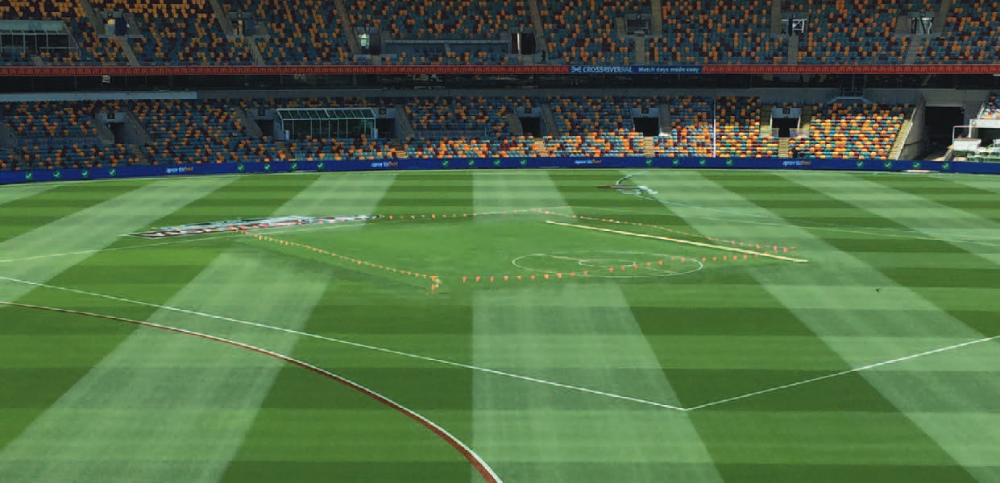When to Test, Assess and Amend Soil Chemistry
Annual soil testing allows us to monitor for both significant and subtle changes in our soil chemistry. It is the monitoring, data archiving and review over time that allows us to amend our soils steadily, ensuring the changes we initiate are based in evidence and as much as possible occur at speeds and in ways nature cooperates with. We know our soils are a dynamic environment – they change in response to many forces – both biotic and abiotic. We also know changes rarely happen quickly; rather they tend to occur quite progressively (almost incrementally) over time. For these reasons we stay aware, and amend regularly, so we can gently steer our soil chemistry in helpful directions. This type of approach reduces the likelihood of needing amendments en masse that are costly and at times difficult to coordinate, rather it allows practioners to gently tune soil chemistry each year looking to work around benchmarks shown historically to be where healthy turf is supported.

Observation supported by data – a strong approach to soil chemistry
In prior notes we have acknowledged there are differing views on how to test, interpret, modify and support good soil chemistry. There is nothing wrong with these differing ideas. There is however a consensus in the turf management community that the root systems we so heavily depend on need a healthy soil environment. Interestingly it can also be argued often the best person (s) to assess what ‘good’ looks like on any given site is the very people who look at it every day and therefore come to know the signs of ‘healthy’. It is such a common occurrence that curators of a surface learn to pick ever so subtle changes in colour, or vigour, that form the early warning system for the site. It happens a lot in relation to dry patch where a sentinel spot the ‘local’ has learned to monitor will offer a slight change in hue that precedes the broader area showing the physical symptoms of wilt. Action at the time the sentinel spot informs safely guides the site into maintained health. The non local simply won’t detect these hints as they lack the intimate knowledge of the site. Soil chemistry can be a bit the same in that a technician comes to know where ‘ideal’ sits for them based on the evidence of what they can produce. Optimal for them may be slightly higher or lower than a nominal target, but the data collected over many years is what forms the evidence of movements towards or away from an ‘ideal’.
Such a skill is of immense value but often occurs with quite a bit of knowledge in the back pocket on related matters – don’t doubt this. This is the message here. Whilst observation alone is excellent it is far from a fool proof system, but the same applies to soil tests considered in isolation. If you can combine such detailed observation with an archive of data that can be compared, analysed and overlaid it usually goes a long way towards ensuring directionally you keep moving towards good outcomes and it is this message that forms the call to action here.
Why more important this year?
This year in particular monitoring for changes in soil chemistry has a few reasons why you should stay on plan. The biggest of which though is the difficult to estimate impact conferred by a lack of leaching rains in the 6 months to December. We have soils that have experienced heat and drying possibly beyond ideal and turf managers have often had constraints on how responsive they can be in applying and using water to manage the deficits experienced. The lack of rain has the flow on effect (pardon the pun) of seeing water sources run low allowing both salts and solids to concentrate. Water sourced from underground reservoirs often see changes in characteristics towards poorer quality too. These less desirable waters that are then used for irrigation (often at increased frequency due to aforementioned lack of rain) creates a circular situation where issues both compound and accelerate. The reality is that with the scarcity of water we are beginning to experience and the increased vigilance and restraint now being applied to its access and use this is a challenge that will continue for some time yet.
It is difficult to generalise on what the impacts of a dry spring and early summer will be on soil chemistry results produced this year. The quality of irrigation water applied in this period will be a big factor, but so will the impacts of last years amendments, the nutrition used through spring and early summer and their relative salt indexes, renovations performed in last 6-12 months and any nursing actions taken through this period to care for turf and soil. It’s hard to roll these diverse forces into a report card, but we can do some things to get a better real-life guide on what’s happening in those soil pores that greatly govern turf health. We can make a conscious effort not to look at soil tests in isolation from the bigger picture of the site. The end results are the product of many inputs and actions – and there might be actions to come that will confer further impacts to the chemistry. Interconnectedness is real. In this context one additional test that might be worth considering this year is a saturated soil test using the water that gets applied to the site. This is rather useful in examining the ‘real’ behavior of soluble nutrition that is genuinely available on your site and can be a valuable aid in understanding the true dynamics occurring in your soils.
Realise a dividend from your past diligence
Now is one of those years where a soil analysis archive you have built over many years may have even more worth. It may be possible to see the impact the weather conditions have delivered in some numbers that are generated, but more importantly it may allow you to further tune your response by measuring plans for the coming 12 months against actions and responses of previous years. With uncertainty around future conditions it may be an opportunity to build some additional buffer into the amendments applied looking to buy some room against continued pressure. We all hope the weather turns and we get back to a more ‘average’ year – but not sure we know what average is any more and sometimes a hint of cautious planning can provide a degree of security we later thank ourselves for.
How Nuturf can help you
Here at Nuturf, we understand the role environmental conditions are playing on our turf and soils. We have extensive soil testing capabilities combined with archiving systems to allow a detailed review of soil chemistry status.
We offer an extensive suite of soil amendment products to cater for nearly any need a soil may have. Amendments can be liquid, granular or injectible to irrigation water. Nuturf has the technical expertise and vast resources around the country to ensure you deal with a single professional service provider from beginning to end
RECOMMENDED SERVICES

Managing Soil Moisture: The Evolution of Wetting Agents

Ninemire Soil Report






